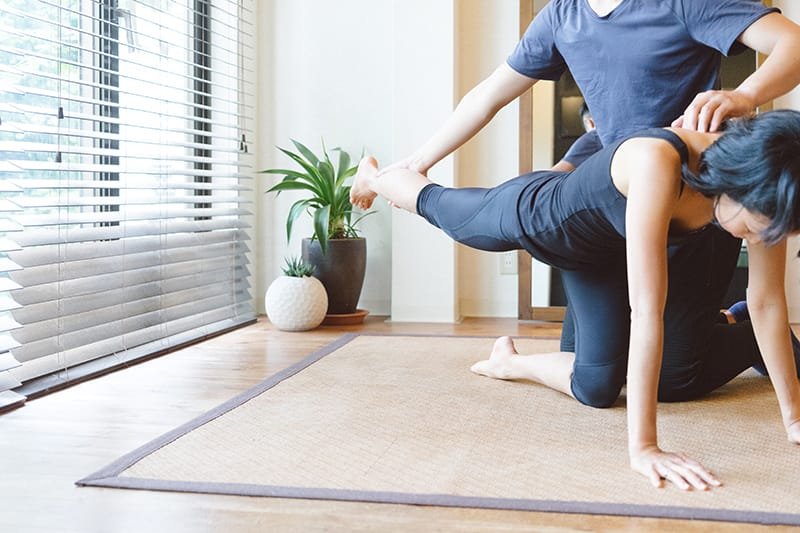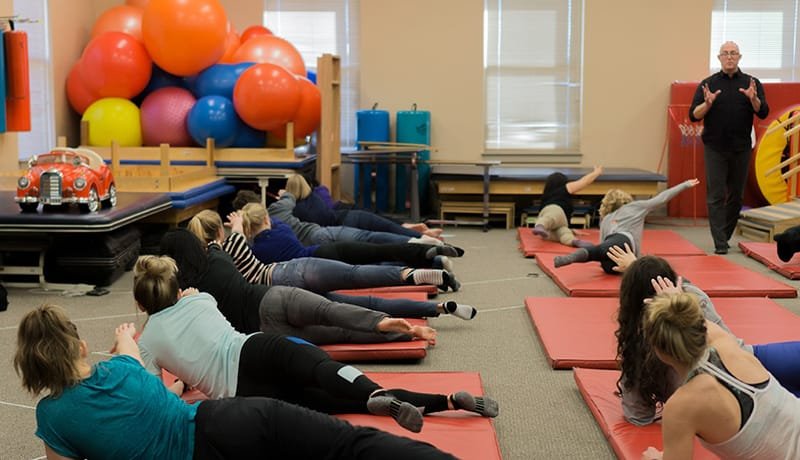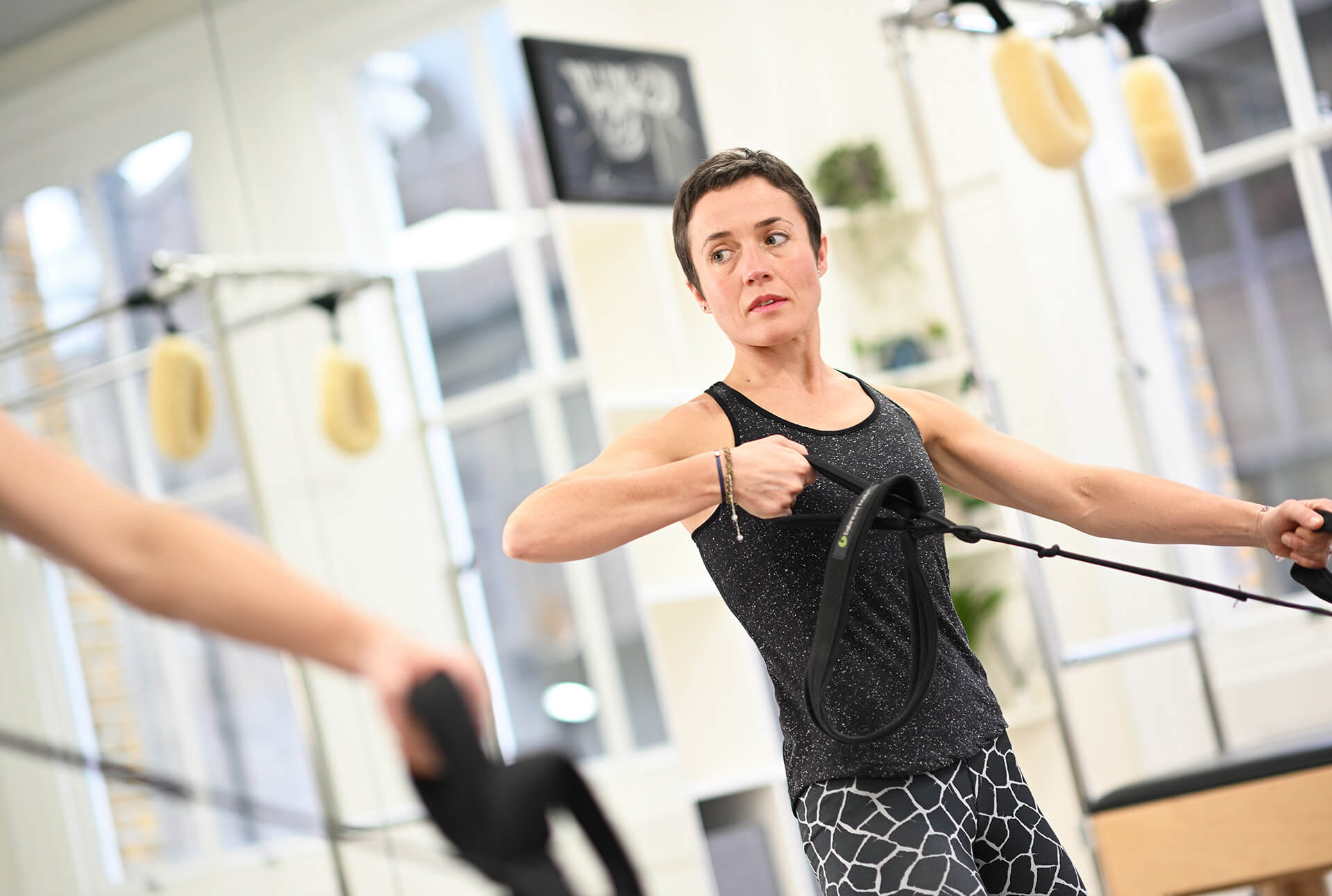Brent Anderson, CEO and President of Polestar Pilates, on why Pilates teachers should train with Polestar
If you are interested in getting your Pilates qualification – perhaps you’ve been googling “how to become a Pilates instructor” – then you’ll have discovered that there are lots of different Pilates schools on the market.
But, in the humble opinion of Complete Pilates, Polestar Pilates is one of the best and most comprehensive programmes out there.
For those of you who haven’t heard of Polestar, it is rehab-focused training programme that fuses together Pilates, Physiotherapy and mind-body energy systems. Because of this, Polestar takes Pilates teaching – and its potential uses – to a whole new level.
So, to all the future teachers out there (and to the qualified teachers who are looking to retrain), read on.
Below you’ll find an interview with Brent Anderson, Physiotherapist, President and CEO of Polestar Pilates, and all-round Pilates expert.
He chatted with us about the origins of Polestar Pilates, how it differs from other training programmes and why people should choose to certify with Polestar Pilates.
Q. Hi Brent, thanks for sitting down to talk with us today. First up, let’s start at the beginning: tell us about how Polestar came about and why you wanted to create this type of Pilates school?
A. Well, starting way back in 1987, I had just started at Physiotherapy school in San Francisco.
I had always danced semi-professionally and at that time was taking ballet classes whilst going to school. My ballet teacher then asked if I had ever heard of “Pielat”, meaning Pilates. I hadn’t. But I went away and did some research and found out the Saint Francis Memorial Hospital in San Francisco had a Pilates programme for dance injuries and dance medicine.
That was where I met Elizabeth Larkam [a movement specialist who was then trained in Feldenkrais]. We connected in 1987. It was also where I met Ken Endleman – founder and CEO of what was called Current Concepts back then but is now known as Balanced Body.
I then graduated from my Physiotherapy degree in 1989 and in 1990 started my own practice in Sacramento, California.
Physiotherapy and Pilates are natural partners
For me, Physiotherapy and Pilates were learnt at the same time and always existed together. I was studying both at the same time and by the time I graduated in ‘89 I had already done the training in Pilates and had my Physiotherapy license.
When I first qualified I had the impression that Pilates really was for dancers and dance rehabilitation but not general rehabilitation.
This changed when I was working for a Physiotherapy company in Sacramento and one of my colleagues was having trouble treating a client who was a non-dancer. It was suggested that I tried Pilates with the client and she had a remarkable outcome.
It was at that time we (Ken, Elizabeth and I) started talking about bringing Pilates into general rehabilitation – that was in around 1990 ish.
The three of us then began travelling the world together [spreading the word about what we were doing]. And in 1992 we formally organised Polestar Pilates. That was officially owned by me and Elizabeth Larkam and Ken. Then Ken turned it over to us.
Polestar has always been a leader in this field
Polestar really took over the rehab world at that time. There was no one else like us.
By 1997 we created our exams – and we were the first ones to create exams to measure competencies to be able to work with special populations [those with injuries, illnesses or other special needs].
We also started creating protocols and ways of designing programmes of how to work with special populations at the same time. That aspect of Polestar has always been our forte.
The team came together in 2003, minus Elizabeth who I had parted ways with in 2000. At this meeting, we – myself and Shelly Power who had been working with us as an assistant for a long time – realised we were falling short on our repertoire.
We knew we had this incredible richness in terms of problem solving and using Pilates in its application for rehab, but we didn’t have enough exercises to work with.
So we completely remodelled our curriculum to include all of the Pilates repertoire. Leaving us with the Polestar programme we have now.
Creating a rehab-focused Pilates school
To be honest, rehabilitation has been at the core of Polestar all along. Pilates has been at the core of Polestar all along.
I really don’t know anything different. [The Polestar way] has always been my therapeutic modality for rehabilitation.

Patient receiving chiropractic treatment
Q. I know Polestar has a different approach to most exercise schools when it comes to teaching movement. Tell me a little bit about that.
A. What differentiates Polestar from everyone else is that we, as Pilates teachers, are very conscious of how we use technical terms and how we use our language.
We don’t get stuck in the language of thinking that strengthening a muscle, the core or pelvic floor, say, really has any different effect that any movement would on the body.
It might, however, have a negative effect. Especially if you over-recruit a muscle when trying to restore something that should be subconscious, spontaneous or subthreshold.
Polestar challenge the idea that you need to work harder
As human beings, we have an underlying mechanism of seeking efficiency – we want to use as little energy as possible to do a task.
However, in fitness culture, we reverse that. We now want to do as much as possible. We want to over-recruit and hold our abdominals in.
I always say that the only time you need to hold your abdominals in is when you’re taking a picture. There is no other time. Your abdominal wall is going to work normally, you just have to be in the right alignment. And this is what we teach in Pilates.
The idea of creating this efficient opportunity for people to move is much more exciting to me than any other sort of isolating muscle recruitment.
Applying Joseph’s principles
Think about what Joseph said [Joseph Pilates, the inventor of the Pilates method]. He said that the “first requisite of health” was a healthy body and a “sound mind, fully capable of naturally, easily and satisfactorily performing our many and varied daily tasks with spontaneous zest and pleasure”.
When you start taking those words apart and think of what they mean: “natural”, “spontaneous”, “with happiness”. They do not refer to a conscious contraction of the abdominals and the pelvic floor [something more traditional Pilates gets its clients to do].
Think of the word “natural” and you might instead recall how children learn to move. There is no outside coaching that changes the child’s ability to walk, ride a bike, pick up a toy – it just doesn’t happen that way.
There is nothing we can tell the child that is going to change its learning process. The only thing that will is their internal reference of “I have a task and I want to do the task more efficiently.”
Unfortunately, though, at 4 or 5 we put children in a chair for the rest of their lives and decrease their natural loading mechanisms.
So now we have all the pathologies of the human body that I believe are associated with a sedentary life. And we have been paying for these problems for over the last 60 to 100 years – at least from the time when we started having formal school.
Problems associated with this lifestyle are what we are seeing in our Pilates studios in the population in general: poor load on the ankles, poor hip mechanics, poor thoracic mobility.
I believe Polestar are the answer to this. We are the nemesis of the seated culture. We want to be the antagonist to the seated culture.
Q. What else differentiates Polestar from other Pilates schools out there?
A. Polestar is incredibly mindful of the individual. Everything with us stems from the individual.
Polestar Practitioners are taught to assess and design programmes for everyone. This means that anyone who wants to participate in Pilates can.
Let your Pilates clients make mistakes
When you put the Reformer straps on clients’ feet, adjust their pelvis, adjust their head and vomit all these cues on them then there is no neural processing going on and there is no increase in awareness – or if there is it is very slow.
Also, if you tell a client to hold a muscle you are interfering with the body’s normal processes.
Instead, we allow our clients to mess up [in the studio] – let them screw up.
Because when you allow people to figure out for themselves what feels better it creates a state of presence that brings them once step closer to self-sufficiency and awareness. Polestar teaches its students that.
Our course is science-based
Polestar challenges existing ideas out there. And we’ve brought the science in to make sense of what we do and why we do it.
We also have a unique set of principles that focus on human movement and how good movement can facilitate our lives. By using these principles, we are able to create positive movement experiences for our clients.
Our principles include ideas about the breath and movement, axial length, and the concept of movement integration and efficiency.
When you understand all these concepts then the impact when you teach movement is far superior than someone just teaching you repertoire [exercises].
That is the difference. Polestar is the Why not the What.
Q. Finally, why should someone choose to train with Polestar?
A. If you like recipes and spoon feeding then Polestar might not be suited to you. If, however, you want to be creative, grow, discover and really understand [about movement and Pilates] then Polestar is the programme for you.
We get many people from other Pilates schools coming to train with Polestar and collaborate with us. And what they are most amazed by is our attitude.
Because with us, nothing is right or wrong. All we believe in is simply responding to a person in this moment because, after all, not all pelvises/spines/brains are alike.
So, when we create “sequences” of exercises [like some Pilates schools teach you to do] you are not serving the individual in their best capacity. Instead, we teach students to ask their clients when they are moving “how are you feeling in this moment” and react to that.
Even our group teaching is all about the individual.
For example, through modifying exercises by changing levers or changing the load, we can make sure that each person in the class has a positive movement experience. Hopefully this will make them shift their belief into being more active, healthier, and making better choices on their own, independently of being coached.
Polestar is all about being present
This is what Polestar teaches: be conscious, be aware.
Thanks Brent! Watch this space for more from Brent Anderson on Pilates as a recipe for “whole body” health, and on exploding myths around Pilates and the core.
If you want to find out more about the Polestar Pilates training courses then click here.
Education is key:
These blogs are designed to give information to everyone, however, it is important to remember that everyone is different! If you have not seen one of our therapists and have any questions about injuries, what you have read or whether this may be useful to you, please just ask. We are more than happy to help anyone and point you in the right direction. Our biggest belief is that education is key. The more you understand about your injury, illness and movement, the more you are likely to improve.






